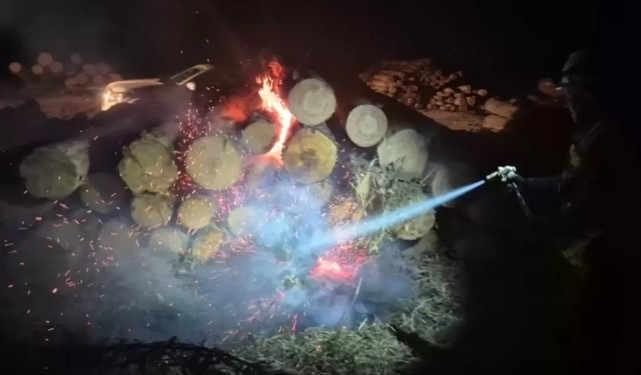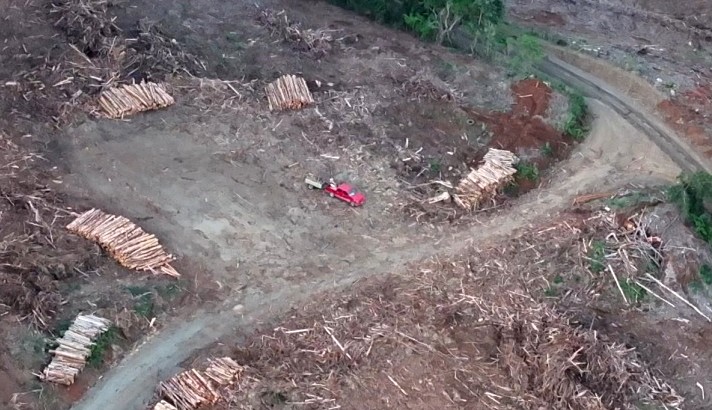Carabineros de Chile Unable to Fly Their Two UAS Camcopter S-100 Due to Lack of Civil Aviation Permits
More than four months after the official delivery of the Schiebel S-100 Camcopter unmanned aerial systems to Carabineros de Chile, Deputy Stephan Schubert (Republican Party) publicly denounced that the units still cannot be put into operation due to the lack of authorizations from the General Directorate of Civil Aviation (DGAC).
The drones, identified as C-30 and C-31, were acquired from the Austrian firm Schiebel Aircraft GmbH with funds from the Undersecretariat of the Interior and officially handed over to the uniformed police on December 13, 2024. The reception ceremony took place at the facilities of the 2nd Public Order Control Police Station (COP) in Pailahueque, La Araucanía Region, with the presence of the then Minister of the Interior and Public Security, Carolina Tohá.
At the time, it was reported that the acquisition was part of a state effort to strengthen surveillance and operational response capabilities in the Southern Macrozone, which has been affected for years by rural violence, sabotage, and armed clashes. The purchase amounted to approximately $6,973,734,425 (around 7 million dollars).
The crews responsible for operating these UAS (Unmanned Aerial System) were trained for two months in Austria, directly at Schiebel's facilities. However, despite having trained personnel and equipment fully deployed within national territory, the drone still cannot take flight.
Deputy Stephan Schubert, representing the La Araucanía Region, strongly criticized the situation, calling it "unacceptable" that a high-tech system, acquired with public funds for an area facing a severe security crisis, remains unused due to administrative hurdles.
"The Southern Macrozone is in a critical security situation. For this reason, the Chilean State invested 7 million dollars in a super drone, which has already arrived and was delivered by former Minister Tohá. However, the Carabineros personnel trained to operate it have not been able to put it into service since then," stated the lawmaker.
Additionally, Schubert reported that he sent an official letter to the Ministry of Defense requesting explanations for the delay in obtaining the corresponding permits from the DGAC and urged the government to expedite the necessary procedures so the aircraft can enter service as soon as possible.
"It is essential that the authorities respond promptly to our letter and take the necessary steps for the DGAC to grant the corresponding permit," he said.
Images of the official handover to Carabineros of the two S-100 units with registrations C-30 and C-31. Credits: Carabineros.
The Schiebel S-100 Camcopter is a vertical takeoff and landing (VTOL) unmanned aerial system designed by the Austrian company Schiebel Aircraft GmbH. Its design allows operations from land or vessels without the need for runways, making it an ideal platform for surveillance, patrol, reconnaissance, and logistical support missions in complex or hard-to-reach environments.
The Schiebel S-100 Camcopter models acquired by Chile will be the first to operate outside the civil sphere in Latin America. These units are equipped with advanced TrakkaCam TC-300 sensors, developed by the Australian firm Trakka Systems. This is a next-generation multispectral electro-optical observation system designed to meet the demanding operational standards of C4ISR (Command, Control, Communications, Computing, Intelligence, Surveillance, and Reconnaissance) missions. Thanks to its modular architecture and multi-channel capabilities, the TC-300 enables real-time situational awareness, proving highly effective in aerial, maritime, and land operations requiring persistent surveillance and rapid, precise decision-making.
Returning to the UAS in question, it has an endurance of up to 6 hours and an operational range of up to 200 km. This allows the S-100 to carry multiple payloads, including the aforementioned electro-optical and infrared cameras, thermal sensors, synthetic aperture radars (SAR), and electronic warfare equipment. This makes it an effective tool for territorial monitoring, border control, anti-drug operations, and critical infrastructure surveillance.
The Camcopter S-100 has been used by various armed forces and security agencies in over 20 countries, including Germany, Australia, the United Arab Emirates, and now Chile, solidifying its role in the unmanned aerial cargo and surveillance market.
Source:helosmag

















